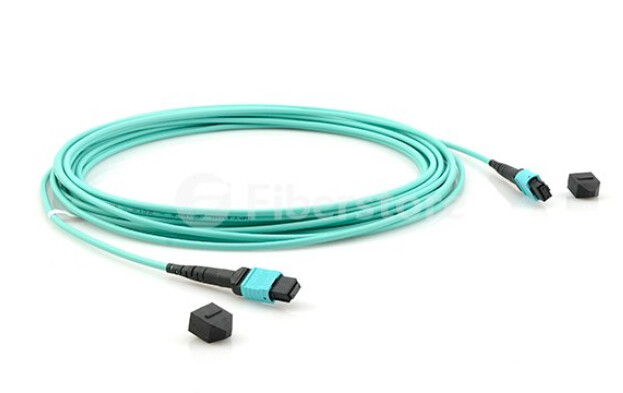May 18, 2016
MPO cable, one commonly used type of fiber optic jumper cables, has now become a preferable cabling solution for the ever-increasing data center bandwidth requirements. MPO cable links feature parallel transmission and they are able to handle bandwidth all the way up to 100 Gbps. MPO cables are compact, pre-terminated, and plug-and-play by design. Though MPO cables have all these advantages, the testing abd certification of them could be very challenging. This article will focus on the MPO cable testing in the data center.
To get a better understanding of challenges of MPO cable validation, it is essential to know MPO cables and how they are tested. An MPO connection is about the size of a fingernail and contains 12 optical fibers, each has a smaller diameter than a human hair, and each needs to be tested separately. The actual fiber test is quick enough, typically under 10 seconds per fiber once you're in process.

One challenge is that pre-terminated fiber can be guaranteed functional as it is in the manufacturer's factory, but then it must be transported, stored, and later bent and pulled during installation in data centers. All kinds of performance uncertainties are introduced before fiber cables are deployed. Proper testing of pre-terminated cables after installation is the only way to guarantee their performance in a live application. Testing and determining fiber polarity is another challenge. The simple purpose of any polarity scheme is to provide a continuous connection from the link's transmitter to the link's receiver. For array connectors, TIA-568-C.0 defines three methods to accomplish this: Methods A, B and C. Deployment mistakes are common because these methods require a combination of patch cords with different polarity types.
Over the past years, more and more data centers have chosen MPO cables for trunking 10G connections. That trunking requires use of a cassette at the end of the MPO cable designed to accommodate legacy equipment connections. Now 40G and 100G connections are coming on the market. A migration path has emerged: removing the 10G cassette from the MPO cable and replacing it with a bulkhead to accommodate a 40G connection, then it might be possible to remove that bulkhead and do a direct MPO connection for 100G. The problem is that this migration strategy may be an efficient way to leverage the existing cabling, but in comparison to 10G connection, 40G and 100G standards call for different optical technology (parallel optics) and tighter loss parameters. In a word, you need to verify the links to ensure the required performance when you have a migration for your network.
The standard testing process of MPO cables can be time-consuming and error-prone. Once you throw polarity of all 12 fiber connections into the mix, it is almost a hit-and-miss manual affair. Upgrading from 10 Gbps to 40/100 Gbps, you need to test and validate performance all over again. What is the proper process of an MPO cable test? The answer is simple. Test all the 12 fibers—the whole cable—simultaneously and comprehensively (including loss, polarity). That sort of test capability changes the fiber landscape, and enables installers and technicians to efficiently validate and troubleshoot fiber—flying through the process by tackling an entire 12-fiber cable trunk with the push of a button. Tools to perform the test are emerging on the market, promising to reduce time and labor costs up to 95% over individual fiber tests. Several characteristics to consider when selecting a test tool:
- A single "Scan All" test function that delivers visual verification via an intuitive interface for all 12 MPO fibers in a connector.
- An onboard MPO connector to eliminate the complexity and manual calculations associated with a fan-out cord.
- Built-in polarity verification for end-to-end connectivity of MPO trunk cables.
- "Select Individual Fiber" function that enables the user to troubleshoot a single fiber with more precision.
Fast and reliable delivery of critical applications has been driving data center technology to evolve at an ever-increasing pace. The insatiable need for bandwidth ensures that the integrity of the data center has become inextricably linked to the strength of the fiber cabling infrastructure. The growing use of MPO trunk cables means that it's time to stop the cumbersome verification of individual fibers. After all, it's a single MPO connection. You should be able to test the MPO connection as a whole.
Posted by: jowang at
04:19 AM
| No Comments
| Add Comment
Post contains 741 words, total size 6 kb.
35 queries taking 0.0156 seconds, 70 records returned.
Powered by Minx 1.1.6c-pink.









